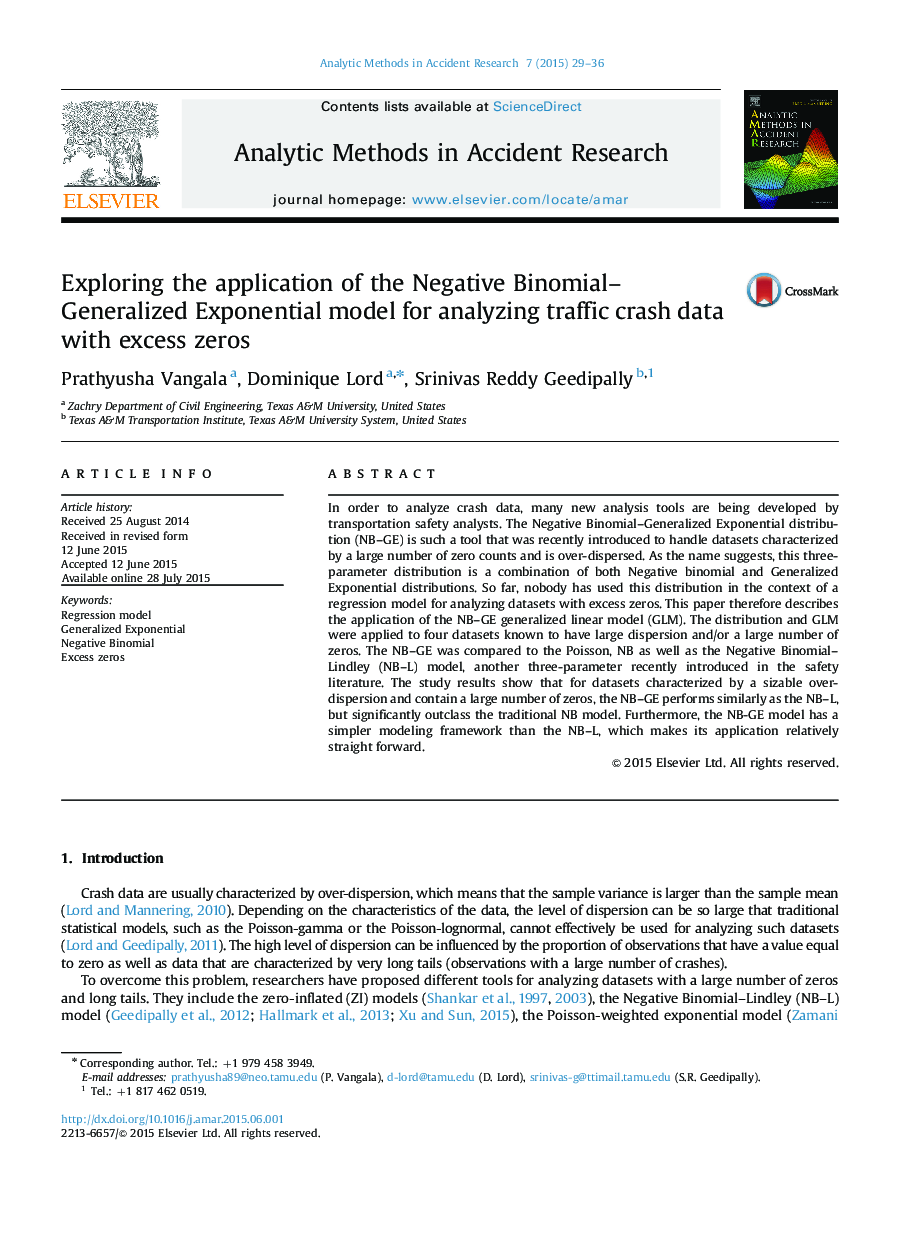| Article ID | Journal | Published Year | Pages | File Type |
|---|---|---|---|---|
| 1104557 | Analytic Methods in Accident Research | 2015 | 8 Pages |
•The NB–GE distribution was recently introduced to analyze data with excess zeros.•We developed a generalized linear model for the NB–GE distribution.•We applied the distribution and model to several datasets.•The model was compared to the Negative Binomial (NB) and NB–Lindley (NB–L).•The NB–GE performs better than the NB and is easier to implement than the NB–L.
In order to analyze crash data, many new analysis tools are being developed by transportation safety analysts. The Negative Binomial–Generalized Exponential distribution (NB–GE) is such a tool that was recently introduced to handle datasets characterized by a large number of zero counts and is over-dispersed. As the name suggests, this three-parameter distribution is a combination of both Negative binomial and Generalized Exponential distributions. So far, nobody has used this distribution in the context of a regression model for analyzing datasets with excess zeros. This paper therefore describes the application of the NB–GE generalized linear model (GLM). The distribution and GLM were applied to four datasets known to have large dispersion and/or a large number of zeros. The NB–GE was compared to the Poisson, NB as well as the Negative Binomial–Lindley (NB–L) model, another three-parameter recently introduced in the safety literature. The study results show that for datasets characterized by a sizable over-dispersion and contain a large number of zeros, the NB–GE performs similarly as the NB–L, but significantly outclass the traditional NB model. Furthermore, the NB-GE model has a simpler modeling framework than the NB–L, which makes its application relatively straight forward.
